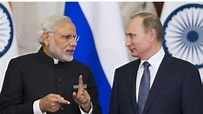Russia has expressed keen interest in Indian tourists, as India’s economy is expanding, the spending power of its citizens is also increasing, leading to a notable surge in Indian travelers going abroad.
At SATTE, Russia encouraged Indians to explore Moscow more extensively, citing the significant economic boost it would provide, particularly amidst Western sanctions. While Russia’s economy has rebounded through strategic measures, its tourism sector still requires a push, which Indian tourists can aptly provide. Additionally, ongoing discussions for a visa-free travel agreement between the two nations emphasize a setback to US efforts that aim towards weakening Russia’s economy and isolating it.
Since the beginning of 2024, Russia has been actively targeting the Indian travel market to strengthen its tourism sector. This initiative is a response to financial challenges arising from the Russia-Ukraine conflict and ongoing European travel bans. Various countries, including European Union nations, the United States, Canada, the United Kingdom, Japan, and Australia, have imposed sanctions and travel restrictions, hindering their citizens from visiting Russia, and causing economic troubles to the Russian economy. These measures have significantly impacted Russia’s tourism industry, which contributed over 5.3 trillion rubles (approximately $88 billion) to the country’s GDP in 2022, representing about 4% of the total GDP. Sanctions and travel restrictions led to a drastic 96.1% decrease in the number of foreign tourists visiting Russia in 2022 compared to pre-pandemic levels.
Russia is keen on attracting Indian travelers to explore its diverse destinations, and Russia is actively promoting its tourism offerings to Indian populations. At SATTE 2024 (South Asia’s Travel & Tourism Exchange), Russia has made a significant presence, underscoring India’s importance as a key market for Russian tourism. Yulia Maksutova, Director of the National Centre for Tourism Development at the Russia Tourism Board, emphasized various tourism opportunities and strategies, particularly focusing on the expanding Indian market. Maksutova highlighted India’s significance as a prime market and viewed the event as an excellent opportunity to connect with Indian counterparts. With India displaying growing interest in Russia, efforts are underway to strengthen tourism ties between the two nations. Discussions for a potential visa-free travel agreement between India and Russia commenced in June 2024. According to Maksutova, Russia welcomed around 8 million foreign tourists last year and anticipates further growth.
Russia’s participation at SATTE aimed to promote its tourism sector, including the upcoming visa-free organized group travel from India. The visa-free initiative is expected to streamline visits for Indian tourists and foster increased tourism between the two nations. A noteworthy development is the announcement of consultations between Russia and India to establish a bilateral visa-free travel agreement. Nikita Kondratyev, Director of the Russian Economic Development Ministry’s Department of Multilateral Economic Cooperation and Special Projects, disclosed that these consultations would commence in June 2024. Kondratyev underscored the significance of such agreements in fortifying bilateral relations between the two nations. The consultations will primarily focus on implementing visa-free group tourist exchanges, akin to those between Russia, India, China, and Iran.
Russia offers Indian travelers a plethora of cultural and historical experiences. Destinations like Moscow, St. Petersburg, and Siberia present captivating travel opportunities. The ease of travel facilitated by the visa-free agreement is poised to increase the number of Indian tourists visiting Russia.
An increased number of tourists from Russia will facilitate Moscow’s economy, firstly, it will result in a substantial surge in foreign currency inflow, a pivotal factor for Russia’s economic stability. Given the constraints imposed by sanctions on other revenue sources, the spending by Indian tourists would infuse fresh currency into the economy, aiding in the procurement of essential goods and assisting in stabilizing the Ruble.
Secondly, an upsurge in Indian visitors would create a surge in demand for services within the travel and hospitality sectors, including airlines, hotels, taxis, and tour guides. Such heightened demand would benefit these businesses and also drive employment opportunities. Moreover, the ripple effect of tourist spending would reverberate across a multitude of industries, spanning from restaurants, cafes, and souvenir shops to entertainment venues and local transportation. This broader pattern of expenditure would nurture a diverse range of businesses, fostering overall economic growth and dynamism within the Russian economy.
The growing cooperation and collaboration between Russia and India pose yet another obstacle to US efforts aimed at isolating Russia and undermining its economy. Despite the challenges posed by the Ukraine war, Russia’s economy demonstrated resilience, rebounding swiftly by 2022. This resurgence was fueled by strategic initiatives such as prioritizing oil exports, tempering gas exports to Europe, and pursuing de-dollarization measures. India has emerged as a pivotal partner in all these endeavors, which further strengthened the bond between the two nations. Alongside these economic initiatives, the tourism sector stands out as a prominent area of collaboration between India and Russia, these efforts aim to fortify bilateral relations and foster enhanced tourism cooperation between Russia and India.
